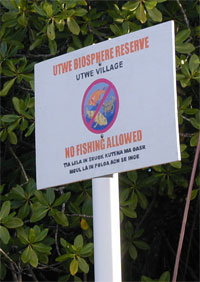World Atlas of Mangroves
Publication announcement

This atlas gives an entire new view on the global state of mangroves.
The World Atlas of Mangroves is the successful result of a joint effort between the International Tropical Timber Organization (ITTO), the International Society of Mangrove Ecosystems (ISME), the Food and Agriculture Organization of the United Nations (FAO), UNEP-World Conservation Monitoring Centre (UNEP-WCMC), UNESCO-Man and Biosphere (UNESCO-MAB), UNU-Institute for Water Environment and Health (UNU-INWEH) and The Nature Conservancy (TNC). The Government of Japan provided major funding through ITTO and all partners provided funding in kind or in cash. The work was implemented by ISME. Spanish and French versions of the atlas are in preparation.
The authors of this atlas are Dr Mark Spalding, Senior Marine Scientist at the Conservation Strategies Division of The Nature Conservancy, based at the Department of Zoology, University of Cambridge, UK, Dr Mami Kainuma, Senior Researcher for the International Society for Mangrove Ecosystems, Japan, and Ms Lorna Collins, research associate for The Nature Conservancy.
This atlas gives an entire new view on the global state of mangroves. Written with the participation of more than 100 international mangrove experts, researchers and organizations, this fully coloured atlas has 60 full-page maps with all mangroves locations of the world, many photos and illustrations, which give exact details about mangrove distribution and evolution in countries and regions. This includes as well protected areas, such as National Parks, World Heritage Sites, Biosphere Reserves and Ramsar Sites. All data and maps emanate from recent satellite images.
After an initial foreword, preface and introduction, the atlas provides a detailed description of mangrove ecosystems, considering the biodiversity and human aspects. This is followed by a large mapping section on mangroves that shows threats, use and over-use, but also management. The regional chapters provide maps and country assessments for Eastern and Southern Africa, the Middle East, South Asia, South-East-Asia, East Asia, Australia and New Zealand, Pacific Islands, North and Central America and The Caribbean, South America and, finally, West and Central Africa. In the annexes figure species ranges and line drawings, national species lists, as well as national statistics including mangrove areas by country.

Individual case studies, which were provided by internationally recognized experts, explain in the specific cases the large potential for mangroves, sustainable management issues and some outlook for the future.
Some comments on this atlas:
'The importance of mangroves is well-known, but never has there been such a comprehensive review of these critical ecosystems. This book should change the way we view, and manage, mangroves for the benefit of coastal peoples and biodiversity world-wide.' Achim Steiner, Executive Director, United Nations Environment Programme (UNEP)
'I am pleased that ITTO, ISME, and the other members of this excellent partnership have produced such a magnificent reference book. The World Atlas of Mangroves details an incredible variety of useful information that will be of considerable value to forest researchers, practitioners, and students to learn more about mangrove ecosystems.' Professor Don K. Lee, President, International Union of Forest Research Organizations (IUFRO)
For purchase information, please contact the ISME Secretariat or visit EarthScan
- Source:UNESCO SC
- 01-07-2010
- © UNESCO/M. Clüsener-Godt -

